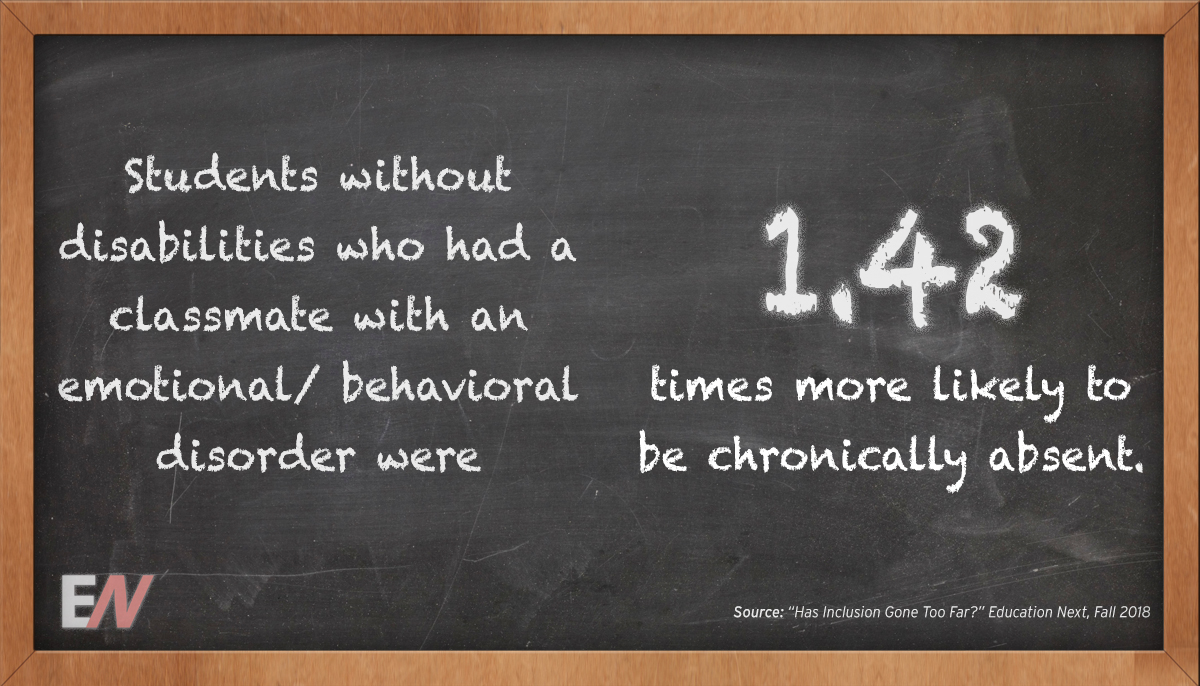
Most students without disabilities have at least two students with disabilities (SWDs) in their classes, but few studies have examined whether SWDs affect their classmates. Early studies that addressed peer effects in inclusive classrooms using older data did not identify any negative academic consequences of inclusion for students without disabilities. However, more-recent research based on the U.S. Department of Education’s Early Childhood Longitudinal Studies (ECLS) has identified some worrisome findings, particularly related to the inclusion of students with an emotional/behavioral disorder (EBD). In 2016, Michael Gottfried and colleagues reported that students without disabilities who had a classmate with an EBD were 1.42 times more likely to be chronically absent than those who did not have such a classmate. To learn more, read “Has Inclusion Gone Too Far?” on EdNext.org or in our Fall 2018 issue.
—Education Next


